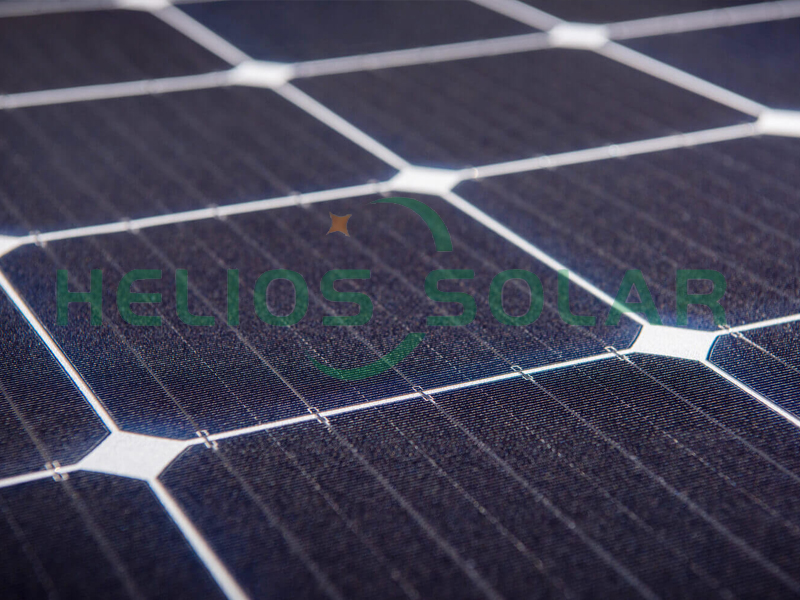Solar panels are becoming increasingly popular for homeowners and businesses looking to reduce their carbon footprint and save money on energy costs. However, a common problem that can occur with solar panels is the creation of “hot spots,” which can reduce the efficiency and longevity of the panels. In this article, we’ll explore what hot spots are, why they occur, and how to avoid them to ensure optimal performance from your solar panels.
What are the hot spots on a solar panel?
Hot spots are areas on a solar panel that are significantly hotter than surrounding areas. These hotspots can occur for a variety of reasons, including shadowing, manufacturing defects, contamination, and battery mismatches. When hot spots occur in solar panels, it can result in reduced power generation, reduced efficiency, and potential long-term damage to the panels.
Why do hot spots occur?
Hot spots can occur for a variety of reasons, and understanding their causes is crucial to preventing their development. One of the common causes of hot spots is shadows. When solar panels are partially obscured by nearby objects or debris, the obscured cells can become hot spots because they absorb less sunlight and produce less electricity. Additionally, manufacturing defects in the solar cells or connections can cause hot spots, as can dirt or grime buildup on the panel surface. Mismatched batteries, i.e. batteries with different electrical characteristics connected in the same panel, can also cause hot spots.
How to avoid hot spots on your solar panels?
To ensure your solar panels are operating at peak efficiency and avoid hot spots forming, here are a few steps you can take:
1. Proper installation:
Proper installation of solar panels is crucial to avoid hot spots. Make sure your panels are installed in a location that receives the most sunlight throughout the day and is free of shadows. Additionally, work with a professional installer who can assess your site and design a system that minimizes the risk of shading and other potential issues.
2. Regular maintenance:
Regular maintenance of your solar panels is essential to prevent the development of hot spots. Keep panels clean and free of debris such as leaves, dirt, and bird droppings, which can cause shading and reduce the efficiency of the panels. Cleaning the panels with water and a soft brush can help remove any buildup and ensure optimal performance.
3. Monitoring and inspection:
Implement a monitoring system to regularly check the performance of solar panels. By monitoring the output of each panel, you can quickly identify any hot spots or issues that may affect its efficiency. Additionally, schedule regular inspections by qualified technicians to ensure your panels are functioning properly and resolve any potential issues before they escalate.
4. Use of bypass diodes:
Bypass diodes are an important part of solar panels and can help mitigate the effects of shading and reduce the risk of hot spots. These diodes, connected in parallel with the solar cells, can redirect the flow of electricity around a shaded or faulty cell, preventing hot spots from forming.
5. High-quality components:
When installing solar panels, it is essential to use high-quality components to minimize the risk of hot spots. Choose panels with reliable manufacturing and solid warranties to ensure any potential issues, such as manufacturing defects, are addressed. Additionally, working with reputable manufacturers and suppliers ensures that the components used in your solar panel system are of the highest quality.
6. Proper system design:
The design of a solar panel system plays an important role in preventing hot spots. Work with a professional designer to create a system that minimizes the risk of shading and ensures panels are connected in a way that reduces the possibility of battery mismatches and other issues that can lead to hot spots.
In summary, hot spots can severely impact the performance and lifespan of solar panels, but with proper installation, maintenance, and monitoring, they can be effectively avoided. By taking proactive steps to prevent hot spots, such as ensuring proper installation, regular maintenance, and using quality components, you can maximize the efficiency and longevity of your solar panel system. As solar power grows in popularity, potential issues such as hot spots must be addressed to ensure solar panels continue to be a reliable and sustainable source of clean energy for years to come.
Welcome to contact solar panel manufacturer Radiance to read more.
Post time: Aug-07-2024


